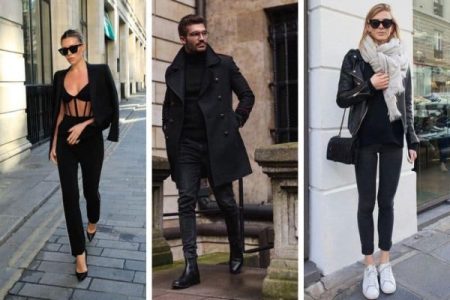Did you know that the men’s suit business is in decline? Industry revenue dropped from $2.2 billion to $1.9 billion from 2013 to 2018.
Wearing a suit every day was once commonplace. Men wore them to work, dinner, and baseball games. Today, many men aren’t even required to wear them to work.
That means a whole generation of men doesn’t know how to dress correctly. Wearing a suit is an art all its own with specific rules.
Guys, do you want to look sharp? Check out this handy suit-wearing guide.
Types of Suits
Too many men have one suit hanging in their closet. It is an all-purpose suit worn for any and every special occasion.
They’re often old, ill-fitting, and don’t match the occasion. A summer cocktail party doesn’t call for a three-piece wool suit.
Most fashion experts agree that a well-dressed man needs five suits. Having options in your wardrobe will help you match your dress to any occasion.
In addition to that, having more than just one suit allows you to mix and match.
As you acquire a new suit, you will be buying something made from a different material. You’ll also want to get it in a different hue. Or even pick up one that has a pattern or colorful print.
Having a variety of colors and cuts to choose from lets you play around with different styles. You could do spezzato, referring to how Italian men split up a suit. They would use the trousers from one and the jacket from another to put together a look that’s polished yet effortless.
Of course, fit matters a lot to look good in a suit. So you’ll want to shop from a retailer specializing in men’s clothing with designer flare.
Single-Breast, Navy
The two-button navy-colored suit with a notched lapel is an all-around suit hero. It’s versatile enough for every possible event in summer or winter. Wear this suit to a wedding, a job interview, or to work.
Also Read: How to dress up with a brown color Suit
With a single-breasted navy suit, you’ll never be over or underdressed.
Single-Breast, Gray
The gray single-breast suit is another closet gem that’s versatile enough for most occasions. The charcoal gray suit is a champion for winter events, while a light grey is best for spring and summer.
Having both light and dark in your closet isn’t a necessity, especially if you also own a classic navy suit.
Double-Breast, Dark
The double-breasted, dark suit is a businessman’s suit meant for everyday work attire. If you’re not a businessman, you still need one of these in your repertoire for more formal events.
Summer Linen, Light
Summertime still requires formal wear. These light-colored linen suits are a necessity for those summer events where you need to dress up. A dark suit in summer is a slow, sweltering death.
Wear these light-colored linen suits to a summer wedding, an outdoor cocktail party, or a night on the town.
Dinner Suit
You’ll need a dinner suit if you attend formal events. It’s hard to look good in a rented tux worn by hundreds or thousands of men.
While you may not get an invite to too many black-tie exclusive events, having one of your own is the key to looking good in one.
Ties and Shirts
Matching your tie and shirt to your chosen suit is so vital to proper suit wear. They’re suit essentials. A few rules will help even the most sartorially challenged, including:
- Your tie should be darker than your shirt
- A patterned tie should go with a solid shirt and vice versa
- Your tie should be the same tone as your jacket and pants
- Your tie should fall to your belt buckle
- A wide tie for large suits, a skinny one for slimmer fits
If you’re not confident with your color-matching ability and still want to look good, don’t worry. A white dress-shirt is your best friend. A white shirt matches any color and style of suit and tie.
Belt or Suspenders?
A belt or suspenders are appropriate for any suit. It is not appropriate to wear both at the same time. They both serve the same function, and wearing both makes your suit look busy and clunky.
Belt Tips
Do you wear a belt with a suit?
Most suit-pants come with belt loops. If your pants have belt loops, you can wear a belt. Matching your belt to your suit is a little more complicated.
Follow these simple, sharp belt rules:
- A suit belt should be no wider than an inch and made of polished leather
- The leather style and the shade should match your shoes
- Subtle buckles are best
- Black belts for black or grey suits; brown for navy
Suspenders
Some men’s fashion experts say suspenders should accompany a suit in any situation. While everyone has an opinion, most modern men prefer a belt.
That doesn’t mean you should avoid suspenders. They’re a classic, dignified look if you follow a few rules of thumb, including:
- Suspenders should be no thinner than an inch and no thicker than two inches
- The leather ends should match your shoe color
- The suspender color should be darker than your shirt
- Avoid patterns for formal events
- Your suspenders should never be visible while wearing your jacket
Suit Accessories
If you want to know how to wear a suit, you have to know how to properly wear suit accessories. Items like cufflinks, tie bars, and pocket squares are important to your overall look.
Cufflinks
Most men reserve cufflinks for the most formal occasions. A stylish pair elevates even your less formal suit. When wearing cufflinks, make sure they match another article of clothing.
Tie Bar or Clip
Though many don’t consider a tie bar an essential part of a suit, they elevate your look.
Fasten your tie bar in between the third and fourth buttons of your shirt, and make sure the bar is not as wide as your tie.
Pocket Square
Men avoid pocket squares because they’re intimidated to match them. It’s not too difficult.
Keep in mind, your square’s pattern shouldn’t directly match your shirt or tie. The square’s function is to complement these suit items.
A good rule of thumb is for your square to incorporate a secondary color. If your tie is blue with red stripes, your pocket square should feature a primarily red pattern.
Wearing a Suit the Right Way
Wearing a suit is not as common as it once was. Fewer workplaces require them, and fewer men wear them to social events.
You might not wear a suit every day, but you want to look good when you do. Follow these simple fashion rules and you’ll never look out of place.
Do you need more fashion news? Check out the rest of our page.






